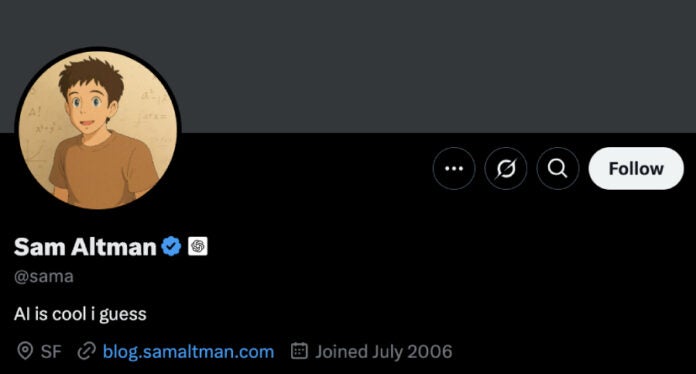If you’ve been wondering why your social media feeds have been awash with Studio Ghibli-style images this week, OpenAI’s new image generator is the answer. On Tuesday, the company embedded the multimodal tool into GPT-4o, and users have been transforming their photos into vibrant, whimsical scenes reminiscent of the Japanese animation studio behind “Spirited Away” and “My Neighbor Totoro.”
OpenAI’s new image generator allows you to upload an existing image to ChatGPT and simply ask it to change the art style in the accompanying text prompt. Even OpenAI’s CEO Sam Altman Ghibli-fied his X profile picture and playfully lamented about how his decade of work in AI has boiled down to people editing their photos into these images.
However, the fun didn’t last long. The system card for GPT-4o’s native image generator now states that OpenAI “added a refusal which triggers when a user attempts to generate an image in the style of a living artist.” OpenAI acknowledged that the fact its tool can emulate named artists’ styles “has raised important questions and concerns within the creative community.”
The same was written in DALL-E 3’s system card from 2023, so OpenAI is not making a wild U-turn on its position when it comes to AI art ownership and copyright. Nevertheless, there is an ongoing debate about whether AI companies violate copyright law by training their models on publicly available content.
Ironically, Studio Ghibli co-founder Hayao Miyazaki is vocally anti-AI. While not specifically addressing the copyright debate, he referred to AI-generated artwork as “creepy stuff” and that he “would never wish to incorporate this technology into (his) work at all” in 2016, as shown in NHK’s “Never-Ending Man” documentary.
The release of GPT-4o’s native image generator came just over a week after Google’s 2.0 Gemini Flash was given a similar feature. This also quickly ran into copyright-related trouble when users discovered it could remove watermarks from copyrighted images.
The ongoing AI art copyright debate
Tech companies are capitalising on the legal grey area surrounding the use of individuals’ work — whether written, illustrative, or audio — to train large language models. Examples like this, where GPT-4o clearly knows the Ghibli aesthetic, demonstrate that companies are doing this without copyright permission, but become evasive when asked about it specifically. For example, when accused of copyright infringement by Getty Images in 2023, Stability AI did not address the allegations in its response, instead suggesting that the case should be taken up in a different jurisdiction.
Naturally, artists are advocating for stronger regulations to prevent this, demanding that any copyright holder who consents to such use be fairly compensated. The New York Times has been embroiled in a legal battle with OpenAI and Microsoft since 2023 over the use of its content for AI training, and Conde Nast and a number of other major publishers initiated similar proceedings toward AI startup Cohere in February. OpenAI will also face a lawsuit from news publication The Intercept, alleging the tech giant removed copyright management information from articles to train its AI models.
In March 2025, more than 400 artists, including Paul McCartney, Ben Stiller, and Cate Blanchett, sent a letter urging action against AI companies exploiting copyrighted works without permission. This came shortly after the release of The Silent Album, a project created to highlight concerns over AI-generated music and its potential to replace human artistry.
In addition, a statement from October 2024, signed by over 47,500 artists condemned the unlicensed use of their works to train AI, calling for stronger protections. Artists also expressed outrage over the U.K.’s decision to revise copyright laws in favour of AI, arguing that it would further erode their ability to control and profit from their creations.
Read about how some Oscar-nominated films used artificial intelligence for enhancements and about how McCartney recently took a stand against AI with regards to U.K. copyright law.
